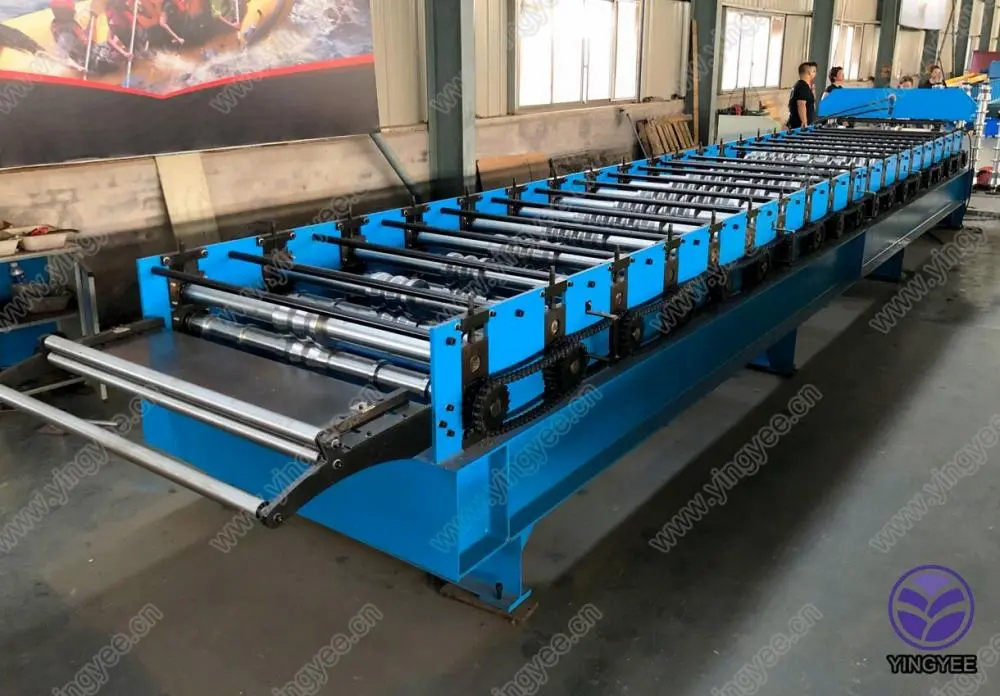
The Rise of Automatic Steel Frame and Roll Forming Technologies in Construction
In recent years, the construction industry has been evolving rapidly, with advancements in technology significantly improving efficiency and reducing costs. One notable innovation is the development of automatic steel frame machinery, particularly in the production of stud and track systems, C channels, drywall components, main furring channels, and wall angles. This technology not only enhances the quality of construction materials but also streamlines the manufacturing process, providing a crucial advantage in a highly competitive market.
Understanding Steel Frame Systems
Steel frame systems are widely used in modern construction due to their durability, strength, and resistance to environmental factors. Unlike traditional wooden frames, steel structures offer improved longevity, lower maintenance costs, and enhanced fire resistance. As architects and builders increasingly opt for steel frameworks, the demand for high-quality steel components has surged. This has led to the development of advanced roll forming machines that can efficiently produce essential components like studs, tracks, channels, and furring strips.
The Functionality of Automatic Roll Forming Machines
Automatic roll forming machines are designed to transform flat steel sheets into specific shapes through a continuous bending process. These machines operate with high precision, ensuring that each piece produced meets stringent quality control standards. For instance, when creating C channels or wall angles, the machine adjusts automatically to create the desired profile, minimizing waste and maximizing productivity.
One of the key features of modern roll forming technology is automation. With advancements in software and control systems, these machines can be programmed to produce various profiles in quick succession. This flexibility allows manufacturers to respond to changing demands without the need for extensive downtime or reconfiguration, ultimately leading to faster turnaround times for projects.
Benefits of Using Automatic Steel Frame Systems
1. Efficiency The integration of automated systems in steel frame production significantly reduces the time taken for manufacturing. Traditional methods can be labor-intensive and time-consuming, but automatic roll forming machines streamline the process, allowing for quicker production cycles.

2. Cost-Effectiveness With reduced labor costs and minimized waste, manufacturers can achieve lower production costs. This financial efficiency is passed on to contractors and builders, making steel construction options more appealing.
3. Customization Modern roll forming technology allows for high levels of customization. Builders can request specific dimensions and profiles, ensuring that the components produced fit their unique project requirements perfectly.
4. Consistency and Quality Control Automation leads to higher accuracy in the production process. Each piece produced is uniform in size and shape, which is crucial for structural integrity and overall building safety.
5. Sustainability Steel is a recyclable material, and the use of automated processes minimizes waste during production. This eco-friendly aspect of steel frame systems is increasingly appealing to environmentally conscious builders and consumers.
Future of Steel Frame and Roll Forming in Construction
As the construction industry continues to innovate, the adoption of automatic steel frame systems and associated roll forming technologies is likely to grow. With ongoing developments in automation and artificial intelligence, future machines may offer even greater efficiency and customization options.
Moreover, as sustainability becomes a driving priority in construction practices, the eco-friendly nature of steel frames will likely enhance their appeal. Combining the strength and durability of steel with automated manufacturing processes represents a significant leap forward in meeting the demands of modern construction projects.
In conclusion, automatic steel frame machinery, particularly for producing stud and track systems, C channels, drywall components, and wall angles, marks a pivotal development in the construction industry. As businesses and construction professionals embrace these innovations, the advantages they offer in terms of efficiency, cost savings, and quality assurance will undoubtedly shape the future landscape of building design and construction.